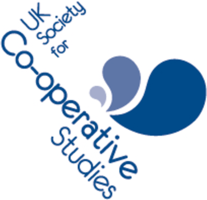| Editorial reviewed/Short paper | Published online: October 2023 |
The impact of the cost-of-living crisis on British credit unions and community lenders
PÃ¥l M. Vika and Andrew Wallace
Vol 55 No 2, pp. 29-34
How to cite this article: Vik, P. M., & Wallace, A. (2022). The impact of the cost-of-living crisis on British credit unions and community lenders. Journal of Co- operative Studies, 55(2), 29-34.
Abstract
Credit unions are often hypothesised to be less vulnerable to crises than other types of businesses. This paper examines the impact of the cost-of-living crisis on the British credit union and community lender sector drawing on interviews with 25 managers and a focus group with four loan officers. This crisis is affecting businesses and households through high inflation, declining real pay, rising interest rates, and falling economic growth. The findings suggest that credit union and community lender customers are experiencing a deterioration in their finances. They save less, have more unsecured debts, are less likely to qualify for a loan, and are more likely to default on loan payments. Lenders are grappling with a tension between supporting customers affected by the crisis and preserving their own financial position. On the one hand, there is evidence of lenders providing additional support to their members, including emergency loans and hardship payments. On the other, they are mitigating the risks of deteriorating customer finances by tightening lending criteria and reducing lending to higher risk groups. The findings underline the need for future research into the long-term effects on the sector and its ability to provide finance to underserved communities.
References
Birchall, J., & Hammond Ketilson, L. (2009). Resilience of the cooperative business model in times of crisis. International Labour Organization.
Coen, J., Francis, W. B., & Rostom, M. (2019). The determinants of credit union failure: Insights from the United Kingdom. International Journal of Central Banking, 15(4), 207-240.
Forker, J., Grosvold, J., & Ward, A. M. (2014). Management models and priorities in member associations: Is credit unions' community involvement crowded-out? Nonprofit and Voluntary Sector Quarterly, 43(2_suppl), 105S-123S.
Francis-Devine, B., Bolton, P., Keep, M., & Harari, D. (2022). Rising cost of living in the UK. House of Commons Library.
Goddard, J., McKillop, D., & Wilson, J. O. S. (2014). U.S. credit unions: survival, consolidation, and growth. Economic Inquiry, 52(1), 304-319.
Hoyt, A., & Menzani, T. (2012). The International Cooperative Movement: A quiet giant. In P. Battilani & H. G. Schröter (Eds.), The cooperative business movement, 1950 to the present (pp. 23-62). Cambridge University Press.
International Monetary Fund (2022). World Economic Outlook Update: Gloomy and More Uncertain. International Monetary Fund.
Jones, P. A. (2006). Giving credit where it's due: Promoting financial inclusion through quality credit unions. Local Economy, 21(1), 36-48.
Lu, W., & Swisher, J. (2020). A comparison of bank and credit union growth around the financial crisis. American Journal of Business, 35(1), 25-44.
McKillop, D., French, D., Quinn, B., Sobiech, A. L., & Wilson, J. O. S. (2020). Cooperative financial institutions: A review of the literature. International Review of Financial Analysis, 71, 101520.
Office for National Statistics (2022, September). Average weekly earnings in Great Britain: September 2022. Office for National Statistics.
Smith, D. M., & Woodbury, S. A. (2010). Withstanding a financial firestorm: credit unions vs. banks, (Report No. 214). Filene Research Institute.
Walker, D. A. (2016). Credit Unions' rising share of small business loans. Journal of Accounting and Finance, 16(6), 11-24.
United Nations (2022, June). Global impact of the war in Ukraine: Billions of people face the greatest cost-of-living crisis in a generation, (Brief No 2). UN Global Crisis Response Group on Food, Energy and Finance.
